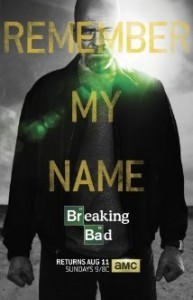Breaking Bad in the desert
Ancient literature (at least the surviving part) is always about good and evil. Whether ancient Greek dramas or Sanskrit poems the quest to understand human behavior has always been fascinating.
In college I learned of the tradition in Asian cultures of all night performances—sometimes over several nights– of dance or sophisticated puppet-plays recounting parts of the Ramayana. It impressed me that whole cultures would focus on stories that illustrated matters of morality. The stories had all the elements of great drama- a sensational story with vivid characters doing super human feats. I was frankly jealous that we seemed to lack a modern equivalent.
In Breaking Bad, we’ve found our own morality play. Many of us binge watched the series leading up to the final episode—which like the good old days before cable TV—we set aside our DVDs and DVRs and watched together as it was first broadcast.
Breaking Bad is sometimes hard to watch. Good people become bad before your eyes: in a variety of ways and for various reasons. Some characters do almost super human feats—which only goes to show that knowledge of science and technology combined with a lack of moral direction can lead to wicked yet amazing results.
The show rips open all strata of life in New Mexico, exposing and illuminating like an adept vulture things you never want to see in person. And yet, the lesson is: it could happen to anyone who isn’t aware of the risk of breaking bad. Walt White started out as a kindly school teacher but he became a monster.




